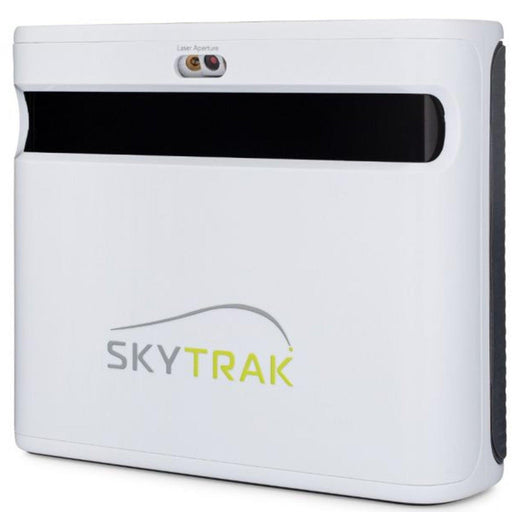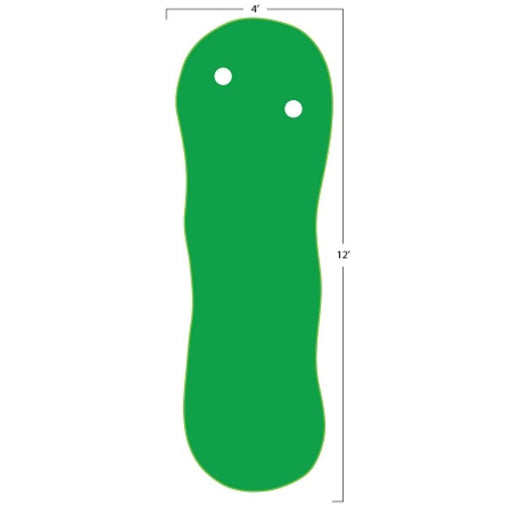
The Ideal Speed for Your Home Putting Green
Imagine having your very own putting green in your backyard or indoor space, allowing you to work on your golf game anytime you wish. One crucial aspect of a putting green's performance is its speed. But what is the ideal speed for a home putting green? In this blog post, we will explore the factors that influence green speed, how to achieve your desired pace, and why it matters for your golf practice.
The Importance of Green Speed
Green speed, also known as green pace or stimp speed, refers to how fast or slow a golf ball rolls across a putting green. It plays a critical role in the game of golf because it affects the distance control and break of your putts. The ideal green speed varies depending on your preferences, skill level, and the type of practice you seek.
Factors Influencing Green Speed
Several factors can influence the speed of your home putting green:
- Grass Type: If you opt for a natural grass putting green, the type of grass you choose will significantly impact the green speed. Bentgrass and Bermuda grass are common choices for putting greens and can be mowed to achieve various speeds.
- Mowing Height: The height at which you mow the grass on your putting green will directly affect its speed. Lower mowing heights generally result in faster greens.
- Green Slope: The slope or contour of your putting green can affect the ball's speed. Uphill putts tend to be slower, while downhill putts are faster.
- Weather and Climate: Environmental factors such as temperature and humidity can influence green speed. Cooler temperatures tend to slow down greens, while drier conditions can make them faster.
- Rolling and Maintenance: Regular rolling and maintenance practices help maintain consistent green speeds. Rolling compresses the soil and grass, promoting faster greens.
Determining Your Ideal Green Speed
The ideal green speed for your home putting green ultimately depends on your personal preferences and goals:
- Novice Golfers: If you're just starting or have limited experience, it's advisable to begin with a slower green speed (around 8-9 on the Stimpmeter). Slower greens are more forgiving and allow you to focus on your putting technique.
- Intermediate Golfers: As your skills improve, you may want to increase the green speed to challenge your distance control. Aim for a medium speed (around 10-11 on the Stimpmeter).
- Advanced Golfers: Experienced golfers often prefer faster greens (12-13+ on the Stimpmeter) to mimic the conditions they encounter on professional golf courses. Faster greens demand precise touch and finesse.
Achieving Your Desired Green Speed
To achieve your ideal green speed, consider the following steps:
- Select the Right Grass: Choose a grass type suitable for your region and climate, keeping green speed in mind.
- Mow and Maintain Properly: Regularly mow and maintain your putting green at the desired height to achieve the desired speed.
- Roll Your Green: Rolling the green helps ensure uniform speed across the surface.
- Monitor Environmental Factors: Pay attention to weather conditions and adjust maintenance practices accordingly.
- Experiment: Don't hesitate to experiment with different mowing heights and rolling techniques until you achieve the desired speed.
Finding the Perfect Pace
The ideal speed of a home putting green is a matter of personal preference, skill level, and practice goals. Whether you opt for a slower pace to hone your technique or challenge yourself with faster greens to mimic professional conditions, finding the perfect pace can enhance your golfing experience and help you become a more proficient putter. Ultimately, the key is to strike a balance that keeps your golf practice both enjoyable and productive.

Have Questions About Golf Simulators?
Our expert team is here to help you find the perfect golf simulator for your needs.
Featured products
-
SkyTrak+
Original price $2,995.00 - Original price $3,145.00Original price$2,995.00 - $3,145.00$2,995.00 - $3,145.00Current price $2,995.00Introducing the SkyTrak+ Launch Monitor: Unmatched Accuracy and Advanced Features Experience a new level of precision and innovation with the SkyTr...
View full details -
ProTee Majestic Simulator Package
Original price $9,618.00 - Original price $13,848.00Original price$9,618.00 - $13,848.00$9,618.00 - $13,848.00Current price $9,618.00ProTee Majestic Golf Simulator Package: Elevate Your Indoor Golf Experience Transform your home or business into a golfer’s dream with the ProTee M...
View full details -
Eagle Golf Mat
Original price $370.00 - Original price $1,130.00Original price $370.00$370.00$370.00 - $1,130.00Current price $370.00Introducing the Eagle Golf Mat: The Ultimate Golf Experience Are you passionate about golf and demand nothing but the very best in your practice eq...
View full details -
Retractable HomeCourse® Golf ProScreen 180
Original price $2,299.00Original price $2,299.00 - Original price $2,299.00Original price $2,299.00Current price $1,999.00$1,999.00 - $1,999.00Current price $1,999.00HomeCourse® Golf ProScreen 180 HomeCourse® Golf ProScreen 180 is a retractable golf screen and enclosure. HomeCourse® Golf ProScreen 180's ballisti...
View full details -
The Augusta V2 4'x12' 2 Cups
Original price $399.00Original price $399.00 - Original price $399.00Original price $399.00Current price $329.00$329.00 - $329.00Current price $329.00The Augusta is one of Big Moss’ traditional models. It offers unmatched versatility for teaching and year round practice. Make a long-term investme...
View full details





